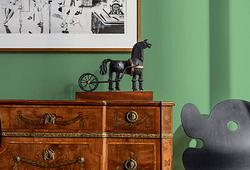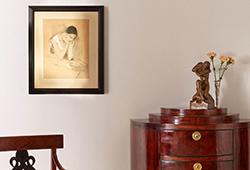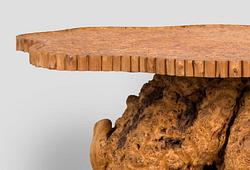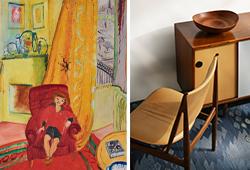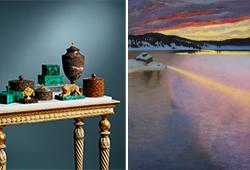Carl Larsson
"Målargården"
Signed C.L and dated 1915. Watercolour, image 68 x 99 cm.
Alkuperä - Provenienssi
Fritzes Kungl. Hovbokhandel, Stockholm.
Council Samuel Sandberg, Söderhamn.
Bukowski Auktioner, Internationella Vårauktionen 458, 19 - 22 April 1988, lot 291.
Nordén Auktioner, Skandinavisk konst samt antikviteter, 24 May 1994, lot 170.
Näyttelyt
Liljevalchs konsthall, Stockholm, "Invigningsutställning: Larsson-Liljefors-Zorn", mars - april 1916, cat. no. 127.
Charlottenborg, Köpenhamn, Svenska Konstutställningen, 1916, kat. nr 462
Liljevalchs konsthall, Stockholm, "Svensk konstkavalkad 1916-1956 - Jubileumsutställning", 1956, cat. no. 6 (with title "Naken modell på gårdsplanen")
Kirjallisuus
"Konst i svenska hem", second volume, 1943, catalogued p. 262, under collection 401: "Consul Samuel Sandberg, Söderhamn".
Ulwa Neergaard, "Carl Larsson, signerat med pensel och penna", 1999, illustrated p. 543 and listed in catalogue supplement, under the year 1915, p. 159, cat. no. 1641.
Muut tiedot
During the years 1914-1915, Carl Larsson devoted most of his time to the wall painting "Midvinterblot," intended to cover the last empty wall in the Nationalmuseum staircase. To support the artist financially during this period, Fritzes Kungl. Hofbokhandel in Stockholm commissioned a series of watercolours from him featuring his beloved Sundborn motifs. In "Målargården," which appears to be one of these watercolours, Larsson showcases both his technical skill and his compositional creativity. The model is seen sitting at Carl Larsson’s easel in front of the porch and the workshop in the main building, with the studio section to the left. She sits before the easel, contemplating the painting the artist made of her, though Larsson himself seems to have left the scene, possibly to sketch the painting currently up for auction instead.
The development of photography in the 19th century had a significant influence on painting. The French Impressionists began to implement various techniques to create the spontaneous effect of a true snapshot, including bolder cropping and new perspectives. They aimed to depict people in their natural movements rather than in the artificial poses characteristic of academic art. In "Målargården," one can witness photography's impact on Carl Larsson. Instead of centring the composition around the model and the easel, the artist places them out of focus, even cropping half of the easel. Nature, which would typically have a secondary role in an academic figure scene, is given almost a leading role in Carl Larsson's composition.





